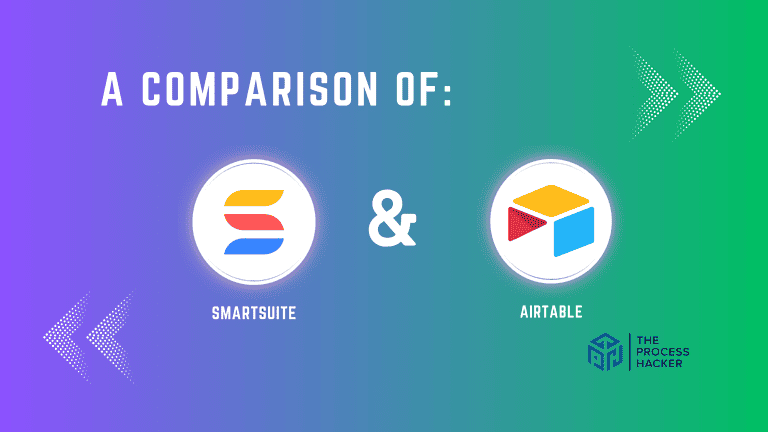The Ultimate HR Compliance Checklist: A Small Business Owner’s Guide to Staying Legal and Thriving
Did you know that… failing to comply with HR regulations can be incredibly costly? In recent years, major companies like JPMorgan, Marriott, Equifax, and Uber have faced fines ranging from $124 million to $575 million for recordkeeping violations and data breaches. This underscores the importance of proactive HR compliance, even for small businesses. Yikes! 😱
As a small business owner, you’re juggling a million tasks daily. But there’s one area you need to pay attention to: HR compliance. It’s not just about following rules – protecting your business, employees, and dreams.
Imagine confidently running your business, knowing you’re 100% compliant with all HR laws and workplace safety regulations. No more sleepless nights worrying about potential lawsuits or government audits. Sounds impressive, right?
That’s why we’ve created this ultimate HR compliance checklist for 2024. It’s your roadmap to navigating labor laws, workplace safety, and employee rights. Let’s dive in and make HR compliance your superpower!
What is HR Compliance?
HR compliance means ensuring your business follows all the employment laws and regulations relevant to your industry and location stipulated in the National Labor Relations Act. Think of it as the rules of the road for managing your workforce. Adhering to these rules can avoid legal trouble, keep employees happy, and build a robust and ethical business.
Key areas of HR compliance often include
- Equal Employment Opportunity: You can’t discriminate against anyone when hiring, promoting, or firing based on race, religion, gender, age, or disability. Everyone deserves a fair chance.
- Wage and Hour Laws: You must pay your employees at least the minimum wage and correctly for overtime hours. This includes proper record-keeping of hours worked.
- Workplace Safety: It’s your responsibility to provide your employees with a safe and healthy work environment. This means following OSHA regulations, providing safety training, and taking steps to prevent accidents.
- Employee Benefits: You must provide certain benefits by law, such as unemployment insurance and workers’ compensation. You also need to follow the rules around things like health insurance and retirement plans if you offer them.
- Privacy: You must protect your employees’ personal information and keep their medical records confidential.
Staying on top of HR compliance can seem daunting, but it’s crucial to running a successful business. Let’s dive into the essential steps you can take to ensure your business is in tip-top shape.
Why Does HR Compiance Matter?
You might think, “Okay, rules are rules, but why should I really care about this HR compliance stuff?” For a small business owner, HR compliance is about much more than avoiding fines. It’s genuinely vital to your success, and here’s why:
1. Protects your business
Think of HR compliance as a shield against potential lawsuits. Treating your employees fairly and following the law makes you much less likely to face legal action that can drain your time and resources.
2. Attracts and retains top talent
Job seekers are looking for more than just a paycheck. They want to work for companies that value fairness, safety, and a positive work environment. Strong HR practices show that you care about your employees, making attracting and keeping the best people easier.
3. Boosts employee morale and productivity
When employees feel safe, respected, and valued, they’re more engaged and productive. A positive work environment, fostered by good HR practices, leads to happier employees who are more likely to go the extra mile.
4. Builds a strong reputation
Nobody wants to do business with a company known for mistreating its employees. HR compliance helps you build a reputation for ethical behavior and social responsibility, which can attract customers and partners who share those values.
5. Saves you money in the long run
It might seem like HR compliance is an added expense, but it can actually save you money. You’ll create a more efficient and profitable business by preventing lawsuits, reducing employee turnover, and increasing productivity.
In short, HR compliance is an investment in your business’s future. It’s about creating a workplace where everyone thrives, from your employees to your bottom line.
The Cost of Non-Compliance: Risks and Penalties
Okay, you understand that HR compliance is important, but what happens if you need to follow the rules? The consequences can be serious and far-reaching, impacting your finances, reputation, and employee relationships. Let’s take a closer look at what’s at stake:
Legal Consequences
Failing to comply with HR regulations can open your business up to a world of legal trouble. Employees can sue your business for various reasons, including discrimination, wrongful termination, unpaid wages, or unsafe working conditions. These lawsuits can be costly to defend, even if you ultimately win.
Agencies like the Department of Labor, the EEOC, and OSHA can investigate your business if they suspect you’re not complying with the law. These investigations can disrupt your operations and lead to fines or other penalties.
Financial Penalties
Beyond the legal headaches, non-compliance can hit you hard in the wallet. The government can impose hefty fines for violating employment laws. Depending on the severity of the violation, these fines can range from a few thousand dollars to hundreds of thousands.
If you’re found liable for violating applicable laws on wages and hours or discriminating against employees, you may have to pay back pay, damages, and even attorney’s fees. Your workers’ compensation and unemployment insurance premiums can increase if you have a history of safety violations or employee lawsuits.
Damage to Reputation and Employee Morale
Perhaps the most overlooked consequence of non-compliance is its impact on company culture and reputation. News of lawsuits or government investigations can damage a company’s reputation and make it harder to attract customers and investors.
Top talent wants to work for companies with a strong reputation for ethical behavior. HR violations can make it difficult to attract and retain good employees. When employees feel they’re being treated unfairly or that their safety is being compromised, it can lead to low morale, decreased productivity, and high turnover.
Ignoring HR compliance is like playing with fire. The risks simply outweigh any potential short-term gains. By prioritizing compliance, you protect your business, employees, and peace of mind.
Key HR Compliance Issues for Small Businesses
Even with the best intentions, it’s easy to slip up on HR compliance, especially when juggling all the other demands of running a small business. But by understanding the common pitfalls, you can take proactive steps to avoid them.
Common Compliance Challenges
Many small businesses struggle with the same HR compliance hurdles. These often include:
- Wage and hour laws: Properly classifying employees (exempt vs. non-exempt), calculating overtime pay, and keeping accurate time records can be tricky, especially for businesses with fluctuating work hours or part-time employees.
- Employee classification: Are your workers truly employees or independent contractors? Misclassification can lead to serious legal and financial consequences.
- Discrimination and harassment: Preventing and addressing workplace discrimination and harassment is crucial, but it requires clear policies, regular training, and an effective system for handling complaints.
- Leave laws: Navigating the complexities of FMLA, sick leave, and other types of leave can be confusing, especially as regulations vary by state and locality.
- Record-keeping: Maintaining meticulous HR records, including personnel files, timekeeping, and payroll information, is essential for demonstrating compliance in case of an audit or lawsuit.
Areas Most Often Overlooked
In the rush of daily operations, it’s easy to let some HR compliance tasks slip through the cracks. Here are a few that often get overlooked:
- Job postings: Ensure your job postings use inclusive language and avoid any discriminatory wording that could deter qualified candidates.
- Employee handbooks: A well-written employee handbook is a valuable tool for communicating policies and expectations, but it needs to be kept up-to-date with the latest legal requirements.
- Required posters: Federal and state laws require you to display certain posters in your workplace informing employees of their rights. Make sure you have the correct posters and that they’re prominently displayed.
- New hire paperwork: Don’t forget to complete all necessary new hire paperwork, including I-9 forms for verifying employment eligibility and state-specific tax forms.
Resources for Staying Informed
Staying on top of ever-changing HR regulations can feel like a full-time job in itself. Thankfully, there are resources available to help:
- The Department of Labor (DOL) website: The DOL website is a treasure trove of information on the Affordable Care Act, wage and hour regulations, HR compliance laws, workplace safety, and other federal employment regulations.
- The Equal Employment Opportunity Commission (EEOC) website: The EEOC website provides guidance on anti-discrimination laws, harassment prevention, and other equal opportunity issues.
- Your state labor agency website: Each state has its own labor agency that enforces state-specific employment laws. Their websites often offer helpful resources and guidance.
- HR compliance software: Consider investing in HR compliance software to help you manage employee records, track deadlines, and stay up-to-date on legal changes.
By being aware of these common challenges and utilizing available resources, you can build a solid foundation for HR compliance and avoid costly mistakes.
Essential Labor Laws Every Small Business Owner Should Know
Understanding the employment laws and regulations that apply to your business is crucial in HR compliance. These laws vary depending on your location, the size of your company, and your industry. At the federal level, there are several key regulations, including:
Fair Labor Standards Act (FLSA): Wages and Hours
The Fair Labor Standards Act (FLSA) sets the ground rules for how you pay your employees. It’s a cornerstone of employee rights and establishes some critical standards you need to know:
Minimum Wage
The FLSA sets a federal minimum wage that all covered employees must pay. However, some states and cities have their own minimum wage laws, and you must always pay the higher rate.
Overtime Pay
Non-exempt employees who work more than 40 hours in a workweek are entitled to overtime pay at 1.5 times their regular rate of pay. To calculate overtime correctly, it’s crucial to understand who qualifies as exempt and non-exempt.
Child Labor Protections
The FLSA also sets rules for employing minors, including restrictions on the types of jobs and the number of hours they can work. These protections ensure young workers are not exploited and can focus on their education.
Recordkeeping
You must keep accurate records of employee hours worked, wages paid, and other employment information. These records are essential for demonstrating compliance during an audit or investigation.
Understanding and complying with the FLSA is not just about following the law; it’s about treating your employees fairly and ensuring they’re properly compensated for their work. You can build a strong foundation for a compliant and ethical workplace by staying informed and implementing proper payroll practices.
Minimum Wage Requirements: Federal, State, and Local
It’s important to remember that minimum wage can vary depending on where your business is located. You always need to pay the highest applicable rate. Here’s a breakdown:
| Minimum Wage Level | Rate | Notes |
| Federal | $7.25 per hour | This is the minimum wage that applies to most employees across the U.S. |
| State | Varies by state | Many states have their own minimum wage laws that are higher than the federal rate. Check your state’s labor laws for the most up-to-date information. |
| Local | Varies by city or county | Some cities and counties have local ordinances that set an even higher minimum wage, often called a “living wage.” |
Overtime Pay Regulations: Who’s Eligible and How to Calculate
Overtime pay can be tricky in HR compliance, but it’s crucial to get it right. Not only is it the law, but paying employees correctly for their extra hours shows that you value their time and contributions.
Exempt vs. Non-exempt Employees
The first step in understanding overtime is knowing which employees are eligible. This depends on whether they are classified as exempt or non-exempt under the FLSA.
- Non-exempt employees: These are generally hourly workers entitled to overtime pay. They typically perform tasks that involve manual labor, repetitive tasks, or close supervision.
- Exempt employees: These employees are not entitled to overtime pay. They usually hold executive, administrative, or professional positions that require independent judgment, discretion, and specialized knowledge.
Calculating Overtime Pay
For non-exempt employees, overtime pay is calculated as 1.5 times their regular hourly rate for any hours worked over 40 in a workweek.
Example: If an employee’s regular hourly rate is $15 and they work 45 hours in a week, their overtime pay would be calculated as follows:
- Overtime hours: 45 – 40 = 5 hours
- Overtime rate: $15 x 1.5 = $22.50 per hour
- Overtime pay: 5 hours x $22.50 = $112.50
Alternative Work Schedules and Overtime
Some businesses use alternative work schedules, such as compressed workweeks or flextime. While these schedules can offer flexibility, it’s important to understand how they impact overtime calculations. For example, if an employee works four 10-hour days in a week, they are not automatically entitled to overtime pay because they have yet to exceed 40 hours within the standard workweek.
Equal Pay Act: Ensures Fair Compensation
Enacted in 1963, the Equal Pay Act (EPA) is a federal law prohibiting employers from paying men and women different wages for performing substantially equal work under similar conditions. This means that if a man and a woman in your company perform jobs requiring the same skill, effort, and responsibility, they must be paid the same.
Key Factors for Equal Pay
To determine if jobs are “substantially equal,” the EPA focuses on the actual work performed, not just job titles. Here are the critical factors considered:
- Skill: Does the job require similar education, training, experience, and abilities?
- Effort: Does the work involve a comparable amount of physical or mental exertion?
- Responsibility: Do the positions involve similar levels of accountability and decision-making?
- Working Conditions: Are the jobs performed under similar environmental conditions (e.g., hazards, temperature, etc.)?
Exceptions to the Equal Pay Act
There are a few legitimate reasons why you might pay employees differently, even if their jobs are substantially equal. These exceptions include:
- Seniority system: You can pay employees differently based on their length of service with the company.
- Merit system: You can reward employees with higher pay based on their performance or achievements.
- Quantity or quality of production: Pay can be based on how much or how well an employee produces.
- Any factor other than sex could include factors like education, experience, or training.
Family and Medical Leave Act (FMLA): Gives 12 weeks of Unpaid Leave
The Family and Medical Leave Act (FMLA) allows eligible employees up to 12 weeks of unpaid, job-protected leave each year for family or medical reasons, such as childbirth, adoption, or caring for a seriously ill family member. It also ensures the continuation of their health benefits during this time.
Equal Employment Opportunity (EEO) laws: Prohibits Discrimination
Equal Employment Opportunity (EEO) laws are a cornerstone of fair employment practices. These laws prohibit discrimination based on protected characteristics such as race, color, religion, sex (including pregnancy, gender identity, and sexual orientation), national origin, age (40 or older), disabilities act, or genetic information.
This means you cannot make employment decisions based on these factors when hiring, firing, promoting, or setting compensation. EEO laws ensure everyone has an equal opportunity to succeed in the workplace based on their merits and qualifications, fostering a diverse and inclusive environment.
Occupational Safety and Health Act (OSHA): Ensures a Safe Workplace
The Occupational Safety and Health Act (OSHA) is a federal law that aims to ensure a safe and healthy working environment for every employee in the nation. It requires employers to identify and eliminate potential hazards in the workplace, such as exposure to harmful chemicals, excessive noise levels, or unsafe machinery. OSHA also sets standards for things like protective equipment, employee training, and emergency procedures.
To stay compliant, HR departments must regularly review and stay updated on changes in these regulations, including state and local laws. Failing to comply with them can lead to lawsuits, penalties, and investigations by federal or state authorities.
Develop and Enforce Comprehensive HR Policies
Clear, comprehensive HR employment laws form the backbone of a compliant workplace. These policies should be documented in an employee handbook, which outlines the company’s expectations and legal obligations. Key policies to include are:
Anti-Discrimination and Harassment Policies
Every business must have a zero-tolerance policy for discrimination and harassment, covering issues related to race, gender, sexual orientation, religion, age, and disability. The policy should also explain the procedure for employees to report discrimination or harassment and how the company will address such issues.
Wage and Hour Policies
Ensure that your employees are paid fairly and according to the law. This includes complying with minimum wage regulations, paying overtime, and paying on time.
Leave Policies
Clearly define how employees can take leave, whether it is for vacation, medical reasons, or family emergencies. Make sure the leave policies align with federal and state regulations, such as the FMLA.
Workplace Safety and Health Policies
Outline the steps your company takes to maintain a safe work environment. These should comply with OSHA regulations and include procedures for reporting and responding to safety concerns.
Once established, HR policies must be consistently enforced. Inconsistent enforcement can lead to claims of discrimination or favoritism, which can, in turn, lead to legal action.
Hiring and Onboarding: Setting the Foundation for Compliance
Bringing new employees on board is an exciting time for any business, but it’s also critical to maintain HR compliance. From the moment you start recruiting to the employee’s first day, you must have the right processes to avoid legal pitfalls and set the stage for a positive and productive working relationship.
Employment Eligibility Verification
Before an employee can start working for you, you must verify their eligibility to work in the United States. This is done through the Form I-9 process, where the employee provides documents that establish their identity and employment authorization.
You’ll need to complete Form I-9 for every employee you hire, no matter their citizenship status. Keep these forms on file for a designated period, as you may need to present them if requested by government officials.
Background Checks and Fair Hiring Practices
Background checks can be a valuable tool for making informed hiring decisions, but they must be conducted legally and fairly.
Legal considerations for background checks
The Fair Credit Reporting Act (FCRA) sets rules for using consumer reports, including background checks, for employment purposes. This includes getting the applicant’s written consent before conducting the check and providing them with a copy of the report and a summary of their rights before taking any adverse action.
Ban-the-box laws and fair chance hiring
Many states and cities have “ban-the-box” laws that restrict when you can ask about an applicant’s criminal history. These laws aim to give individuals with past convictions a fair chance at employment.
Developing a consistent screening process
To avoid discrimination claims, it’s important to have a consistent and objective screening process for all applicants. This means using the same criteria and background check procedures for everyone applying for the same position.
Employee Handbooks: What to Include for Legal Protection
A well-written employee handbook is a valuable resource for both you and your employees. It sets clear expectations and helps ensure everyone is on the same page about workplace policies and procedures.
Your handbook should include policies on key HR compliance areas, such as equal employment opportunity, anti-harassment, wage and hour laws, leave policies, workplace safety, and employee conduct.
Laws and regulations change frequently, so keeping your handbook updated is crucial. Ensure all employees receive a copy of the handbook and any updates and that they can review it.
Have employees sign an acknowledgment form stating they received and understood the handbook. This helps protect you in case of disputes or legal claims.
HR Compliance Checklist: Your Step-by-Step Guide
Staying on top of HR compliance requires ongoing effort. Think of it like maintaining a well-oiled machine – regular checks and adjustments are essential to keep everything running smoothly. This checklist will help you stay organized and ensure you’re addressing key compliance tasks daily, weekly, monthly, and quarterly.
Daily and Weekly Compliance Tasks
These are the everyday tasks that keep your HR operations running smoothly and help you avoid common compliance issues:
- Time tracking and wage calculations: Ensure you have a reliable system for tracking employee hours worked. Double-check wage calculations to ensure accuracy and compliance with minimum wage and overtime laws.
- Workplace safety checks: Conduct regular inspections to identify and address potential safety hazards. Encourage employees to report any concerns and promptly address any issues that arise.
- Employee communication best practices: Foster open communication with your employees and provide clear and accessible information about policies, benefits, and any changes affecting them.
Monthly and Quarterly Compliance Reviews
These tasks require a bit more in-depth attention and are typically handled on a monthly or quarterly basis:
- Payroll tax obligations: Ensure you withhold and remit the correct payroll taxes, including federal income tax, Social Security, Medicare, and any state and local taxes.
- Benefits administration tasks: Review and update employee benefits information, including health insurance, retirement plans, and other benefits offerings. Ensure you’re complying with all relevant regulations.
- Training and development tracking: Record employee training and development activities, especially those related to compliance topics like harassment prevention, workplace safety, and diversity and inclusion.
Annual Compliance Audits and Updates
Just like you might take your car in for an annual tune-up, your HR compliance practices need a regular check-up, too. An annual compliance audit helps you identify any areas where you might fall short and make necessary adjustments to stay ahead of the curve.
Reviewing and Updating Company Policies
Laws and regulations constantly evolve, so reviewing your company policies at least once a year is crucial to ensure they are up-to-date and aligned with current legal requirements. This includes policies in your employee handbook and any stand-alone policies on anti-harassment, equal employment opportunity, and workplace safety.
Conducting Pay Equity Analyses
Pay equity is an ongoing concern, and it’s important to proactively assess your compensation practices to ensure you’re not inadvertently discriminating based on gender or other protected characteristics. A pay equity analysis involves comparing the compensation of employees in similar roles, considering factors like experience, performance, and job responsibilities.
Assessing Overall Compliance and Identifying Gaps
An annual compliance audit should involve a comprehensive review of all your HR practices, from hiring and onboarding to payroll and benefits administration. This helps you identify any areas where you might be out of compliance or where you could improve your processes. You can use checklists, audits, and external HR consultants to help you with this process.
Key Considerations for HR Compliance
While this checklist provides a solid framework for HR compliance, remember that every business is unique. Here are some additional factors to keep in mind as you develop your compliance strategy:
Document Everything
Documentation is one of the best defenses against legal issues. Every step of the employment process should be documented, from hiring to termination. This includes:
- Job Descriptions: Accurate, updated job descriptions help ensure that employees are properly classified (e.g., exempt vs. non-exempt) and paid according to their roles.
- Performance Reviews: Regular, documented performance reviews provide a clear record of employee performance, which can be helpful if disciplinary actions or terminations are necessary.
- Disciplinary Actions: If an employee violates company policies or underperforms, it’s essential to document all disciplinary actions. This documentation can protect the company in the event of a wrongful termination claim.
- Employee Leave Requests: Keep detailed records of leave requests to ensure compliance with leave policies and laws such as the FMLA.
- Workplace Injuries: If an employee is injured on the job, it is vital to document the incident in detail, including the steps taken to address the injury and ensure a safe environment moving forward.
By maintaining comprehensive documentation, HR can show that it has made good-faith efforts to comply with employment laws and policies, which can be critical in defending against legal claims.
Seek Legal Counsel When Necessary
While HR professionals are often well-versed in employment law, there are situations where consulting with an attorney is advisable. Complex issues, such as a major layoff, allegations of discrimination or harassment, or navigating the legalities of independent contractor classification, may require expert legal advice.
Having a strong relationship with employment counsel can help resolve issues before they escalate into costly lawsuits.
Final Thoughts on HR Compliance
Congratulations! You’ve just taken a huge step towards mastering HR compliance for your small business. By following this comprehensive checklist, you’re not just protecting your company from legal troubles – you’re creating a fair, safe, and productive workplace that will help your business thrive.
Remember, HR compliance isn’t a one-time task; it’s an ongoing process that requires attention and updates as laws and regulations change. But don’t worry – you’ve got this! And if you ever feel overwhelmed, don’t hesitate to consult with HR professionals or legal counsel.
Ready to take your HR compliance to the next level? Download our free HR Compliance Toolkit for Small Businesses, complete with customizable templates, checklists, and guides. Your employees (and your peace of mind) will thank you!
Stay compliant, stay successful, and keep building the business of your dreams!







